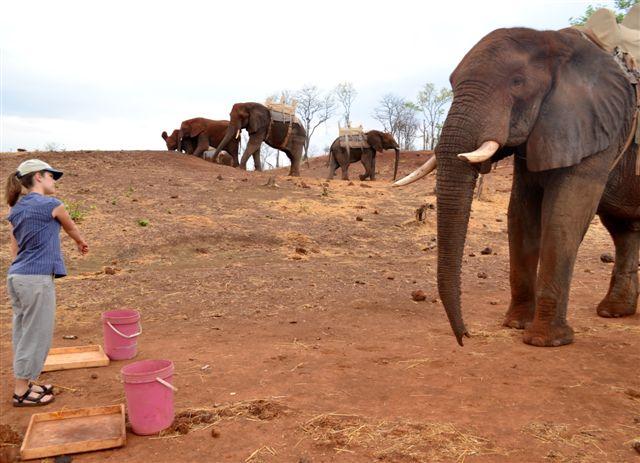Researchers find surprising human-animal relationship

A recent study has shown that elephants may understand and correctly interpret “pointing.” Photo Credit: International Business Times
By Morgan Patullo, Staff Writer
Pointing is a function easily taken for granted by people today; it is a universal signal easily understood by humans and is used to communicate in various ways. Most humans can understand this signal from the age of one, as pointing is used by infants who know what they need, but cannot yet say it themselves.
Other species, surprisingly enough, are not very successful in understanding pointing. Chimpanzees, the closest relative of humans, do not get the “point of pointing,” though many domesticated animals, such as dogs, cats, and horses, have proved to understand pointing better than wild animals.
Most interestingly, a study by Dr. Richard Byrne and Anna Smet has shown that none other than elephants are able to understand a human’s pointing signals. For two months, eleven African elephants from the company Wild Horizons in Zimbabwe were tested by Dr. Richard Byrne and Anna Smet of the University of St. Andrews in the object-choice task.
In said object-choice task, food is placed in one of many containers. The researcher signals which container holds the food by pointing to it and the subject is then allowed to go obtain the food out of whichever container they choose.
One year old babies are 72.7 percent successful in choosing the correct container, but many other animals are unsuccessful.
The elephants tested in this study, however, were able to follow the pointing signal 67.5 percent of the time. Amazingly, the elephants were able to follow the cue under many conditions: when just the hand was used, when the whole arm was used, whether the pointing arm was nearest the correct choice or not, whether the pointer’s arm crossed the body or was always on the side of what was pointed at, and whether the arm broke the silhouette from the elephant’s viewpoint or not.
Despite these many varied factors, the elephants still were highly successful. Because the elephants’ success was measured to be identical from Trial 1 onward, the idea that they were learning while completing the task and therefore able to associate the pointing and food was ruled out.
This research is, of course, viewed with great caution.
There are speculations that the elephants used in the study might only be able to understand pointing because they had observed their handlers pointing to each other since they had been with Wild Horizons. Therefore, further research will be done to see if wild elephants can point to each other.
“It makes us want to revisit visual signals by elephants for elephants,” said Ms. Smet.
Other animals such as dolphins and whales are also on the top of their list for future study. Certain animals could be closer than we think to the human race, based on these finds.
